For most of us, a rockery is a small agglomeration of natural-looking stones at the far end of a garden, and an opportunity to grow delicate alpine flowers and succulents. That’s a rather 20th-century notion, perhaps a little quaint. And it is dramatically at variance with Joseph Paxton’s grand picturesque vision at Chatsworth, where from 1842 he created a craggy wonderland designed to transport visitors – in the imagination at least – to wild Yorkshire moorland, or perhaps even as far as the Alps, whence the 6th Duke of Devonshire (together with Paxton, as his head gardener) had travelled.
Tom Stuart-Smith was one of half a dozen designers invited up to Chatsworth in 2018 by the 12th Duke of Devonshire. He felt that the Rock Garden had lost much of its definition and character, smothered as it was by a canopy of tall trees and mature shrubs.
IN BRIEF
What Mid-19th-century rock garden at ducal estate.
Where Derbyshire.
Soil Brashy, heavy, stony clay; slightly acidic.
Size Three acres.
Climate Temperate.
Hardiness zone USDA 8.
“The whole progress through was just a bit too decorous and the planting too horticultural and patchy,”says Tom. “This is a garden that ought to look semi-apocalyptic – as if some great eruption has happened.”
So he decided to start again more or less from scratch, emphasising – and dramatising – particularly the two entrances into the Rock Garden, while also finessing and varying the path system. It now feels as if the paths are finding their way through the rocks, as opposed to forging through them.
Tom bolstered Paxton’s original vision by adding numerous gritstone boulders, a stone quarried on the estate and used for the house façades. An estimated 50 tonnes of rock has been brought in – the newer boulders a light buff colour while Paxton’s originals are a darker grey. At the heart of the Rock Garden is a large pond, fed by the Strid – an artificial ‘wild’ stream – that Tom says creates a feeling of openness and animation in the midst of the scene. A decision was taken to remove a bridge that had formerly spanned it, to avoid any hint of domestication.
Steve also notes the slightly Japanese character of the Rock Garden as it developed, with mature katsuras and acers coming to dominate. Tom has retained some of these, but otherwise introduced perhaps less demonstrative species, notably Cornus kousa in several varieties, as a favourite of the current Duke and Duchess.
Overall, says Tom, his vision has been to make it less horticultural and more experiential. “I wanted more groups and drifts and repetitions,” he says, listing as key link plants veronicastrums, actaeas, persicarias, irises (mainly Iris sibirica), astrantias, rodgersias, epimediums and hellebores.
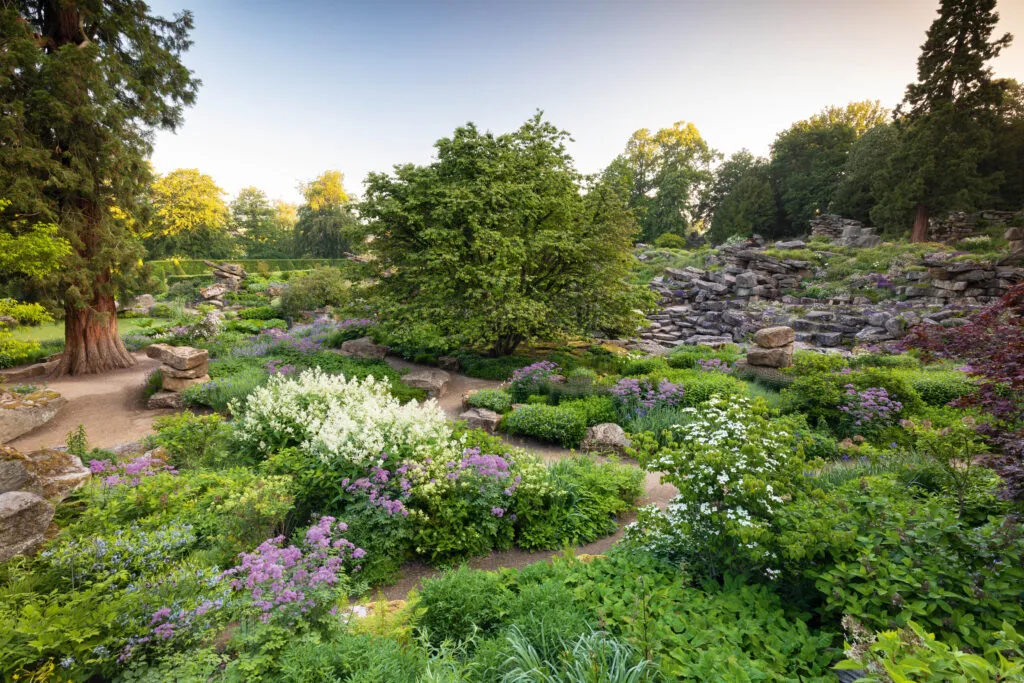
A froth of tall, white Persicaria x fennica ‘Johanniswolke’ dominates the Rock Garden at Chatsworth. Created in the 1840s by the 6th Duke of Devonshire and his head gardener Joseph Paxton, the garden was partly inspired by their travels to the Alps and partly by the wild moorland landscape around Bolton Abbey, the Duke’s Yorkshire seat.
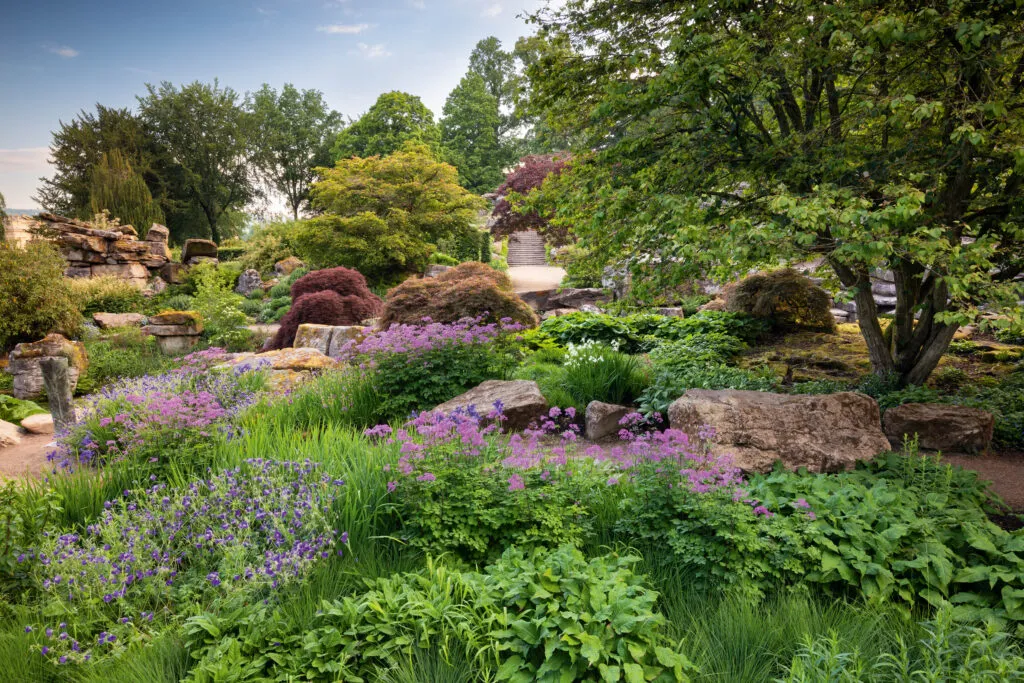
A few existing Japanese maples were left in situ, but otherwise Tom has refigured the planting, which has a broadly pink, purple and white theme, courtesy of thalictrum, campanula, iris and other plants of wild appeal.

Tom has replanned the path system so that visitors must wend their way around and sometimes through the rocks and boulders, adding to the atmosphere of exploration.
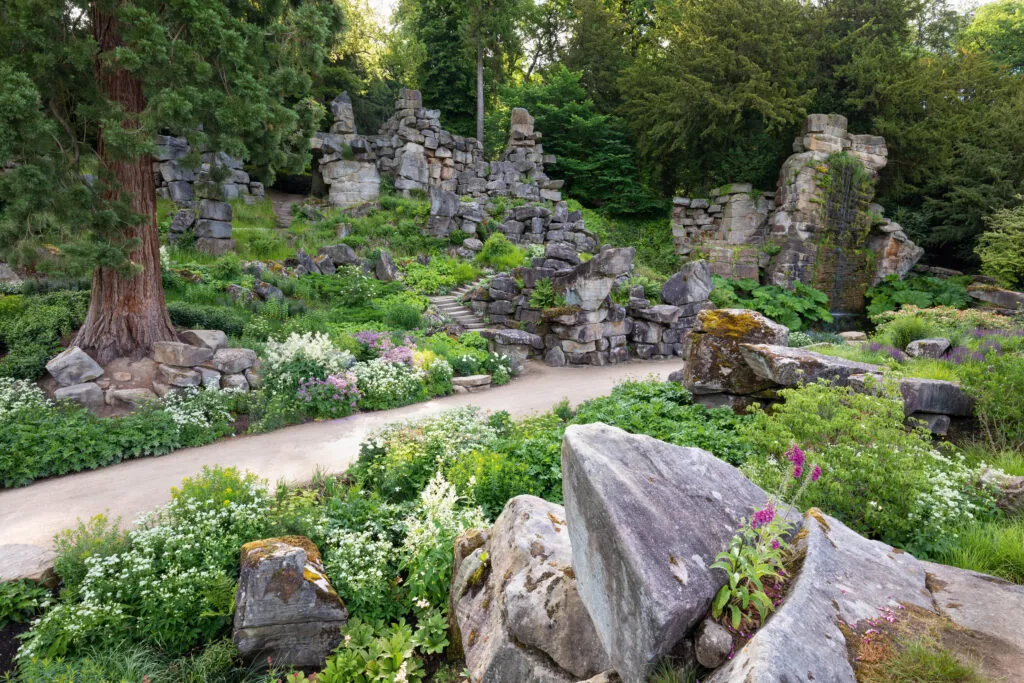
Some 50 tonnes of locally quarried gritstone have been brought in to the Rock Garden, complementing the ‘towers’ originally engineered by Paxton and his team. Fluffy white persicaria creates a softer complement to the rock textures.

A cascade tumbles down the face of one of Paxton’s original cantilevered rock stacks, some of which contain a metal armature, surrounded by a mix of lush planting dominated by a large Darmera peltata and spots of purple colour from Salvia nemorosa ‘Caradonna’.
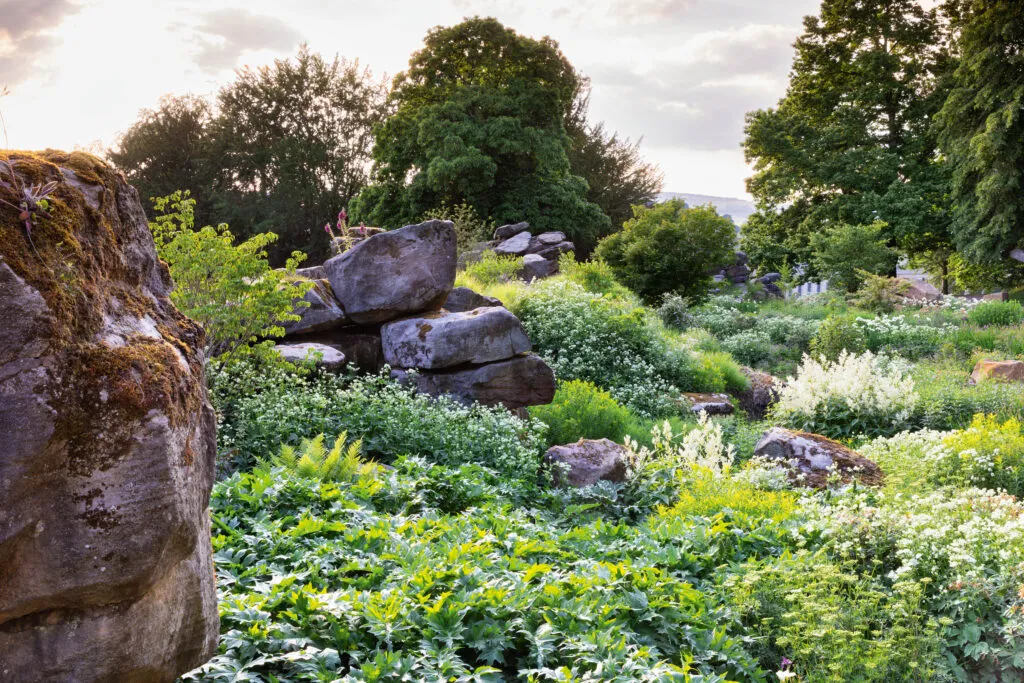
Mature woodland surrounds the Rock Garden, which takes the form of a half-bowl. The scale of the boulders is in keeping with the magnificent landscape of the surrounding Chatsworth estate.
8 key plants in Chatsworth's Rock Garden
Thalictrum ‘Black Stockings’
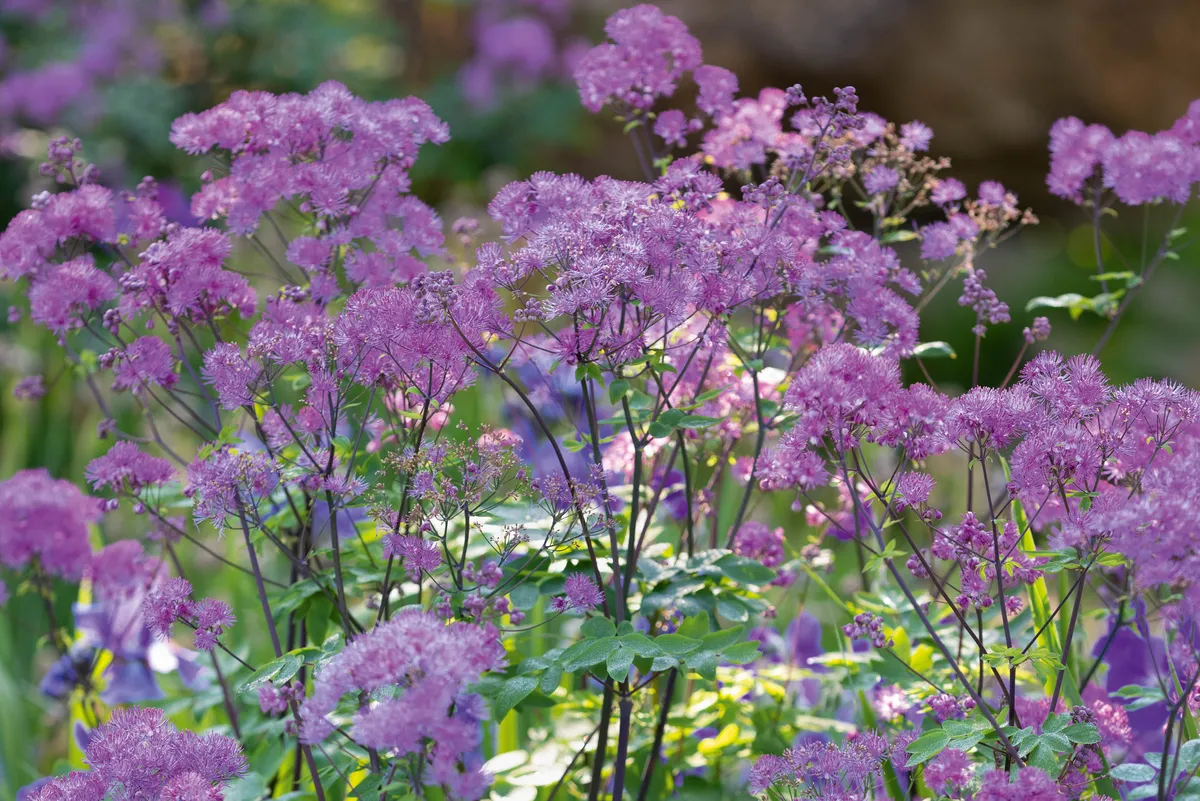
A useful early season accompaniment to Iris sibirica and astrantias. “The dark stems of this cultivar make it more telling than the species,” says Tom. 2m x 75cm. AGM.
Campanula poscharskyana 'Stella'

A low-growing bellflower that Tom uses extensively with Erigeron karvinskianus to colonise the cracks in the rocks. But he warns, it is very prolific. 20cm x 50cm. AGM.
Astrantia major ‘Alba’
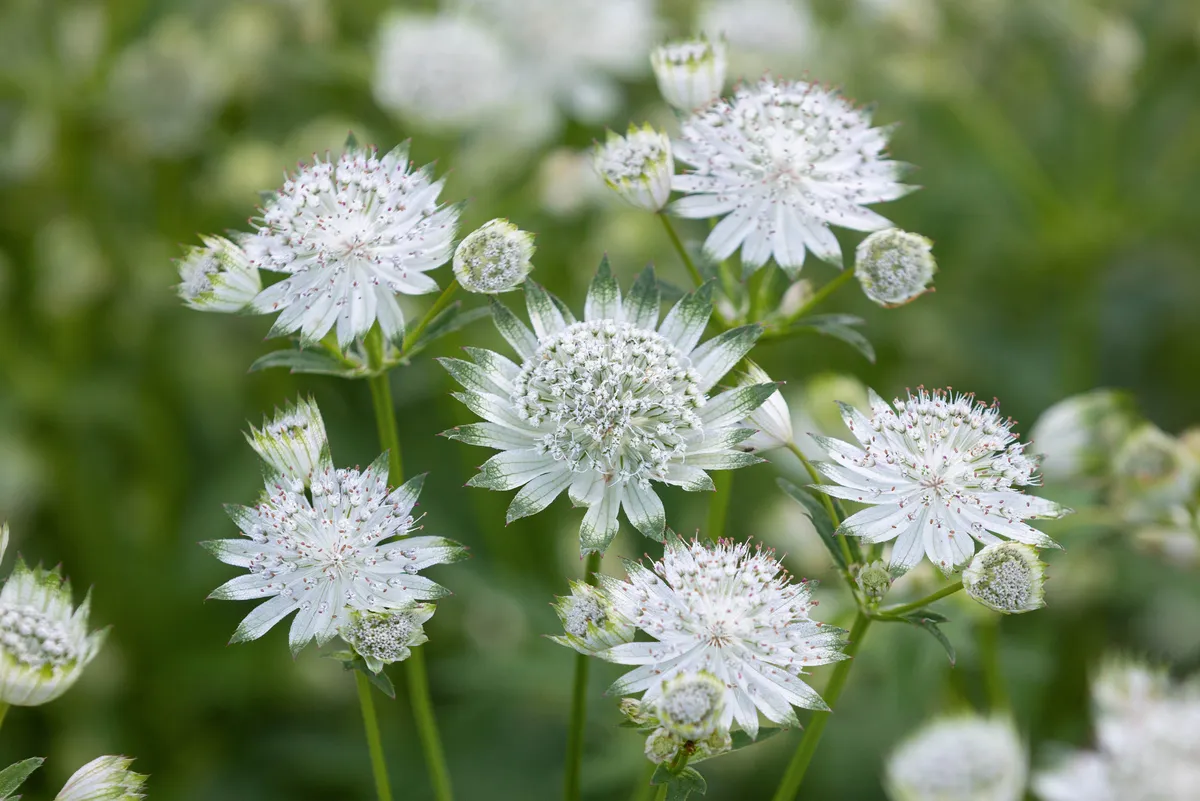
A long-lived perennial that is well-suited to large-scale planting, and one that Tom describes as being “very fresh and light in early summer”. 90cm x 45cm.
Erigeron karvinskianus
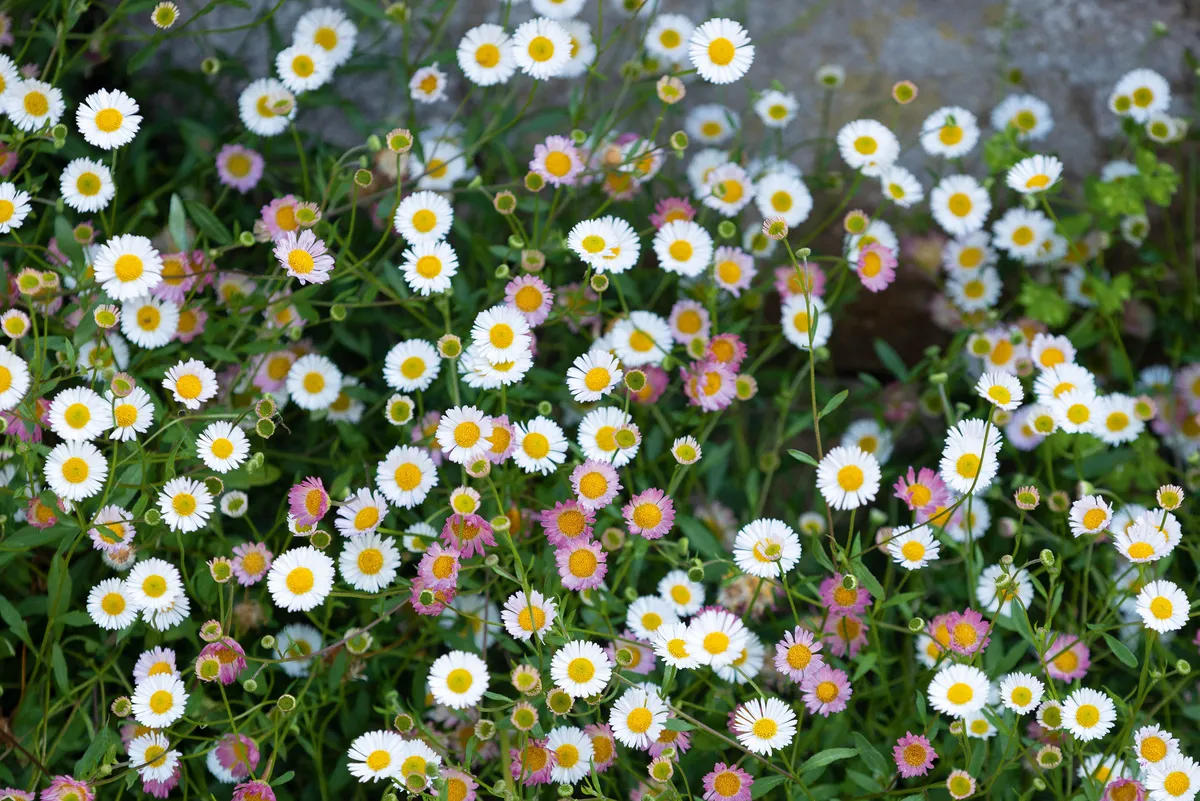
A popular, low-growing perennial that Tom likens to “vegetable Polyfilla – rapidly healing over gaps opened up by adventurous visitors – scaling the rocks in unexpected ways”. Ideal for ground cover. 30cm x 1m. AGM.
Sesleria autumnalis

For Tom, the autumn moor-grass is “one of the most successful grasses on the dry banks – a very robust evergreen associating well with origanum, salvia, dianthus and cenolophium, to make something quite reminiscent of an alpine meadow.” 1m x 50cm.
Persicaria x fennica ‘Johanniswolke’

Tom calls this persicaria “a giant handsome thug”, but it is one that doesn’t seem to seed, so it just gradually expands to become a “vast frothing mass”. 2.5m x 1.5m.
Cenolophium denudatum
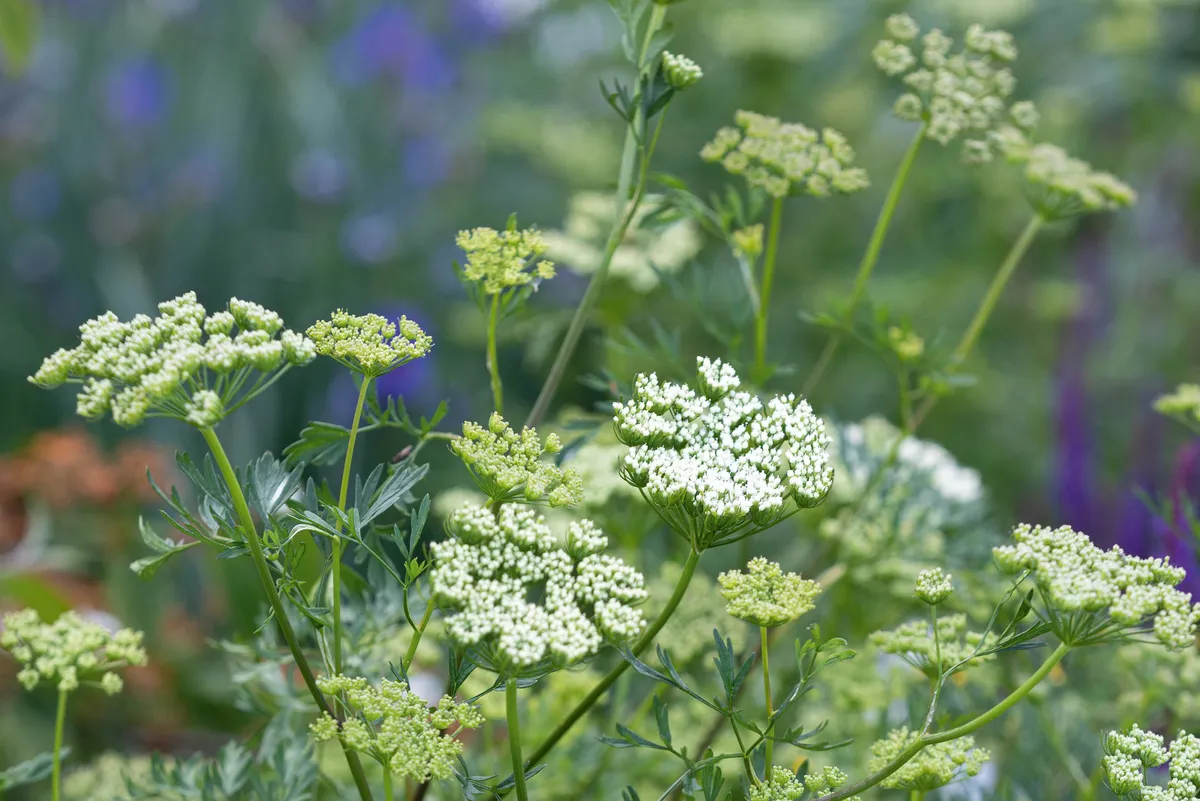
An umbellifer that Tom describes as being “somewhere between cow parsley and wild carrot but with a glossy, smart sophistication”. For Tom just a few of these can give a garden a wild feel but he warns that it can seed freely. 1m x 75cm.
Monarda bradburiana
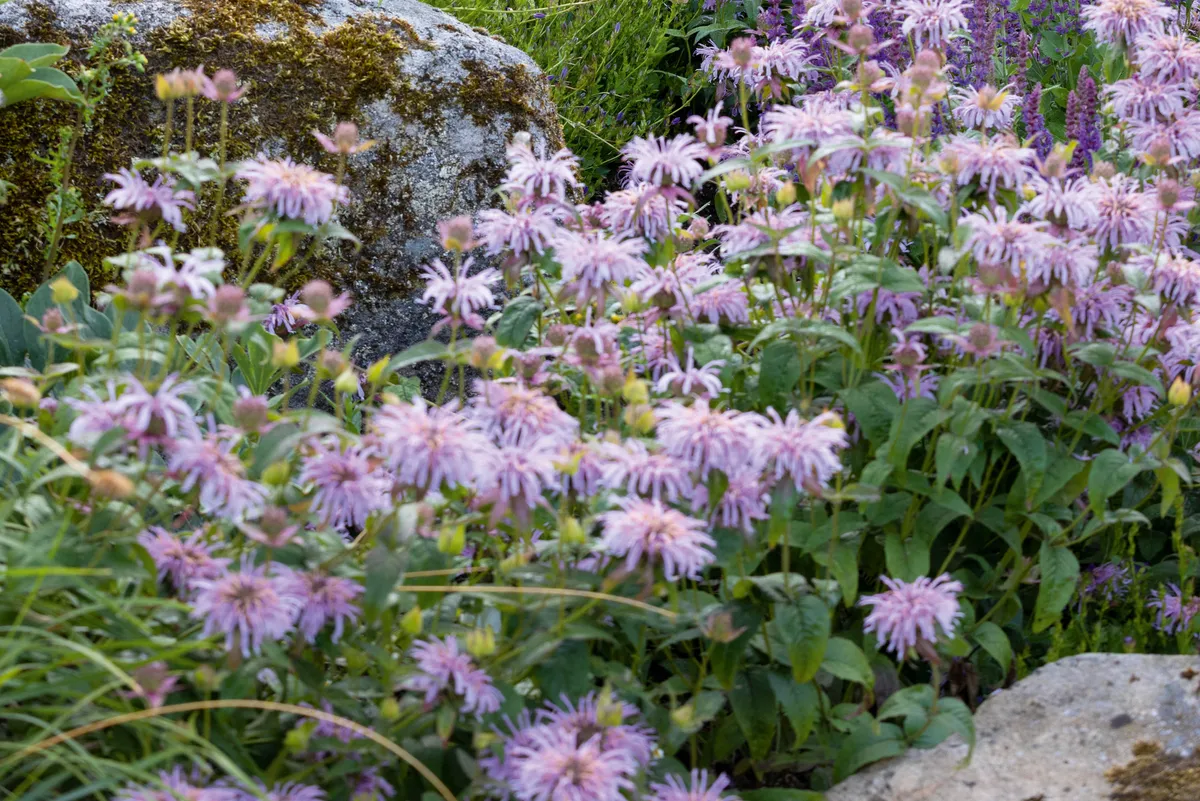
A spring-flowering, low-growing, mildew-free, tenacious bergamot for difficult dry places. 60cm x 60cm.
Visit: Chatsworth, Bakewell, Derbyshire DE45 1PP. chatsworth.org.
Garden open 10.30am-5pm. See website for other ticket options and seasonal opening times.
